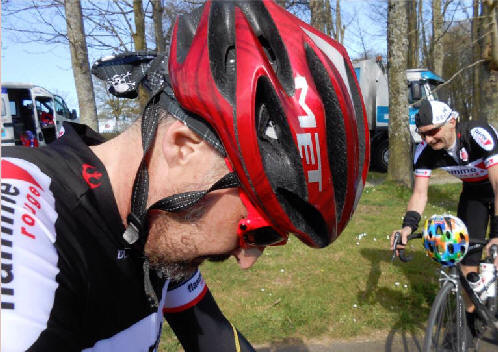Efficiency, Effectiveness & Economy
Two riders at the end of the outrageous
Tro Bro Leon
One had been very effective, the other very efficient (slack)
Today, we are going to start from the premise that efficiency, effectiveness and economy are, or should be, three of the stalwarts of your winter training programme.
Surely, it matters not what your training objective is, or at what level you ride, at all times your aim should be to ride as efficiently, effectively and economically as possible?
There's no better time to start this process than now; so here goes...
First The Definitions
In a throwback to my corporate life, management guru Peter Drucker pithily defined efficiency as "doing
things right", while effectiveness was
described as "doing the right things". The two are easily
conjoined and confused but they are two very different concepts.
Economy, is the perfect balance between these two apparently dichotomous requirements. For our purposes, economy can be thought of as "getting the best physical outcome for the least physiological cost".
This factsheet also allows me to use my previously "much-loved" Boston Matrix charts. These boxes simply get across, often very complex points. I used to bang these things out like there was no tomorrow when I had a proper job!
In the bottom left corner of our box, we have a rider who is less than optimally trained. They could be a rider new to the sport, returning from injury, going through the Slacktober lay off, and/or detraining after a full on competitive season.
The reason matters not; just make sure you are somewhere in that bottom left corner before you start your winter base training. If you don't, you may not make it through to next summer unscathed, or realize the fitness gains your efforts deserve.
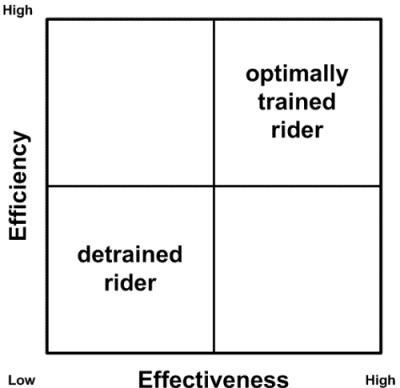
The primary purpose of any rider, or training programme, is to get from the lower left box, to the best possible position within the upper right box, for the least possible expenditure of effort.
Obviously, this should be in time for the right physiological adaptations to take place to meet the requirements of the season's main objectives.
In other words, you need to get from wherever you are in the lower left, to your individual physical peak in the upper right, when the medals are being handed out in the summer. How hard can that be...?
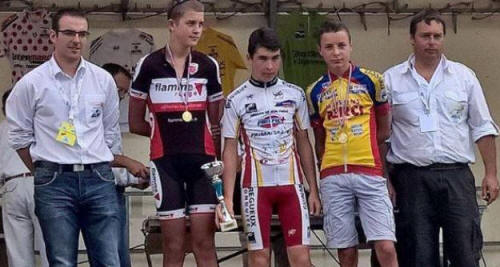
Callum Ecobichon~ 2nd Place, Plerin Brittany
Do the right stuff, in the right order, get the right results...
The Road Most Travelled
Left to their own devices, the vast majority of riders will
concentrate on effectiveness. And why would they not?
Surely, that's the aim of all this cycling malarkey, to become more
effective?
We see them week in week out around the world, smashing the pedals, beating themselves in to the ground, forcing themselves to become fitter, faster, stronger. They constantly surf the Zone 3 and 4 wave of under recovery or over-training.
The premise being; "If I ride as hard as I can today, I will be stronger tomorrow". We've all done it and we've all become more tired doing it.
The theory (if there is any) behind this logic (which there isn't), is that once effectiveness has topped out, efficiency will surely come. Their path to their perceived optimal fitness will be something like this...
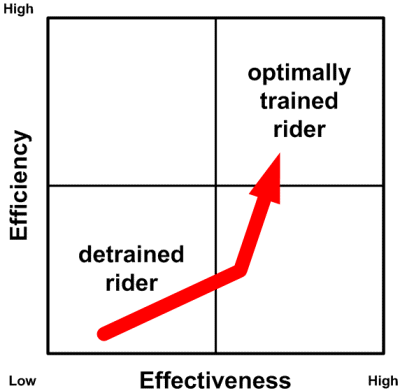
To an extent, it works. Their body will overload and their line will slowly move sideways until it hits a glass "wall". Once it does, there will be a type of adaptation and incremental efficiency gains will slowly accrue.
But their effectiveness isn't effective enough, and the efficacy of their marginal efficiency gains come too late to save them; ultimately something breaks. Normally around April or May.
It's training Jim, but not as we know it.
Cycling is probably one of the most counter-intuitive sports when it comes to training methodologies. The phrase you must walk before you can run was surely invented for us???
Bonfire Of The Vanities
Most things that determine our training capability
(how close we can get to that top right corner) are set genetically and out of our control.
The best we can do is squeeze as much as we can from the genetic gifts passed
to us from our parents.
 The "smashers" will batter their body in to submission and push
as hard as they can to make themselves more effective.
The "smashers" will batter their body in to submission and push
as hard as they can to make themselves more effective.
Once effectiveness tops out (although the level of that effectiveness has now been self-inflicted and self-restrained) an element of efficiency will be gleaned.
If you keep banging out 300 watts for 20 minutes your body will adapt and heart rate will eventually decrease for this given effort. Lactate levels may drop, but you will never get above 300 watts!
I've said it constantly on our rides, and many times on this website. The biggest problem I encounter with most riders in the winter, is that their slow rides are too fast and their fast rides are too slow. Effective they are; efficient they are not
The "clever" way to train, is to make yourself as aerobically efficient as you can, before concentrating on anaerobic effectiveness. This is the prime purpose of our 12 week Base Build Programme.
The "smasher" spends 12 weeks, giving it large in Zone 3 and 4, slowly forcing their effectiveness left to right along the bottom of the matrix.
At the end of their weekend training ride they're hot, bothered, fatigued and breathing heavily. To them it's been a perfect chain-gang session. For their body, it's been, shall we say, "sub-optimal".
Although effective, this type of riding raises efficiency very slowly. The red "arrow of fitness" spends 12 weeks to get to the first kink.
An economical use of time, physical and psychological resources, it is not. At some point, they will crash and burn...
The Road Most Avoided
The "clever rider" starts their training season with copious amounts of
steady-state
Zone 2 work, building and expanding their aerobic efficiency by orders of magnitude.
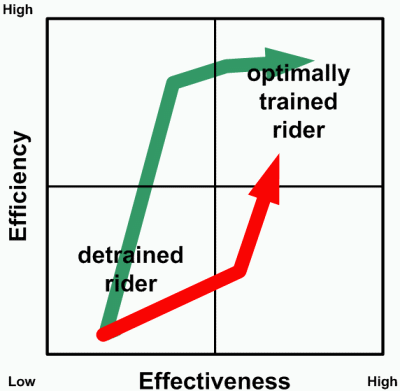
During this time, the really clever riders also concentrate on their mechanical efficiency, which we'll cover a little later.
As you can see with the direction and altitude of the green arrow, huge efficiency gains can be realised within twelve weeks. Controlled riding will quickly take you to the upper left box and to the first kink to the right.
A further eight weeks of Pre-Comp will take you to the second, flattening kink, just inside the upper right box.
And an eight week Early Comp finale will take you to a much, much, higher top right position, than that of a winter of riding harder and faster and longer chain gangs.
As with most things in life, it's all about the preparation. Spend quality time preparing the efficient base and the effective peak will be demonstrably higher than that of just working on being effective alone.
The route you take could mean the difference between having a good season and a great season...
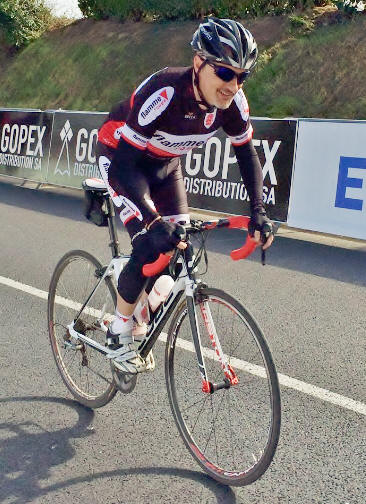
Jason Stratford
Jersey Island RR Champion 2015
The Economic Outlook
During all of this efficiency/effectiveness conundrum, we have to factor in economy.
There's no use being the strongest rider in the race, if you fire
all your bullets too soon. Which goes for the race as much as
it does for the season. Timing is everything.
During the 2015 island veteran road race champs, Jason (above) managed his season's personal best one minute power output in the last 60 seconds of the final climb of his season's main objective. Now that is what you call peaking to perfection!
This was achieved through doing the right things, in the right order and paying scrupulous attention to details. From the first steps of pre-season Slacktober, through to his training start in Slowvember, everything was geared towards having a successful season.
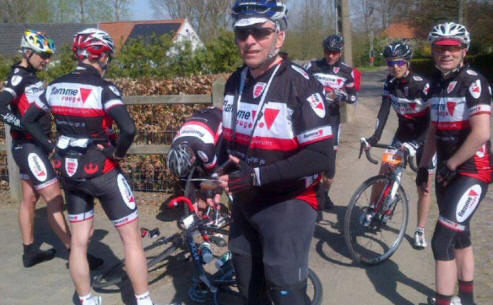
It all went a bit (mechanically) wrong in Flanders when his rear mech exploded and he couldn't make use of his early-spring fitness, but some things are just out of our control.
But it all came together as the season progressed and when it mattered most his green line was higher in the top right box than anyone elses.
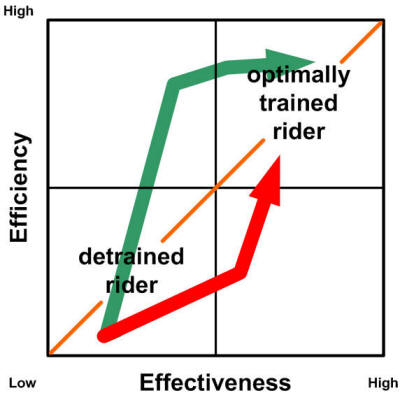
Throughout his training year Jason, and many other of the flamme rouge riders never strayed far from that golden line of economy. The perfect balance between efficiency and effectiveness.
That golden line is your friend, between now and your next objective, do everything you can to embrace it and stay above it. The longer you are below the line, the harder it is to make progress towards it.
Emerging Economies
There are two modes of economy (as far as we are concerned).
The first relates to your aerobic efficiency and exuding the most
power per litre of inhaled oxygen. The second is something
a little more ethereal.
But first, lets look at lung power. One of the things we measure in our rider testing, is lung capacity, Which allows us to draw a direct correlation between the size of your lungs and the power you put out.
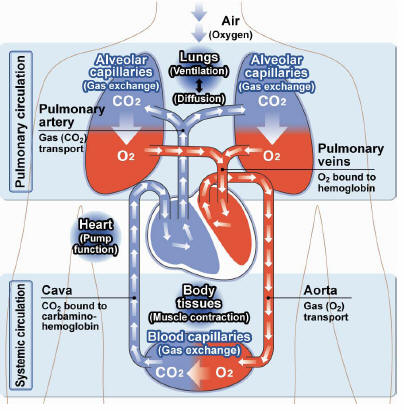
The biggest lung capacity of a rider I've measured locally is 7.07 litres; sadly he wasn't a "competitive" cyclist! The average of all the riders I've measured is 5.05 litres.
Of riders I've tested, the average Maximal Aerobic Power output, relative to lung capacity is 69.29 watts per litre. The biggest "bang for your buck" I've measured, is 86.76 watts per litre!
I have a less than average lung capacity, but perform well on tests, and can manage to knock out 81.69 w/ltr. But I have 30 years of aerobic efficiency building behind me.
Our friend with the seven litre lung capacity hit just 60.68 w/ltr. Imagine the power they could put out if we could raise their efficiency to 80w/ltr!?
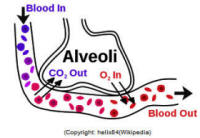 The
main objective of your training should be to maximise your oxygen uptake by developing your heart, lungs, plasma and
mitochondria.
The
main objective of your training should be to maximise your oxygen uptake by developing your heart, lungs, plasma and
mitochondria.
This is done by training efficiently with a good base build programme; once the efficiency blocks are in place you can build an effective palace as big as you like. Or at least genetically capable of.
The second economic efficiency we are looking for is mechanical. Or to be more precise, how we pedal. Just how hard can that be?
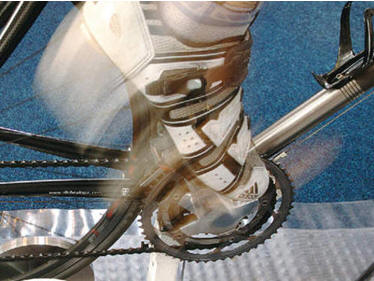
Sausages Not Peanuts
Sadly, this may come as a shock to some of you, our bodies were not
designed for cycling. Cycling is an alien concept to the human
body. Despite being one of the most efficient modes of
transport, it is not a natural use of our limbs or physiology.
Legs are designed for going backwards and forwards in a standing posture. They are not designed to circularly propel a bicycle sitting down. To further disturb the equilibrium, a bicycle is 100% symmetrical through its vertical plane. I have yet to meet a body with the same attributes.
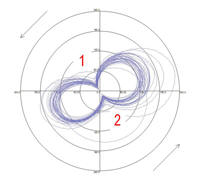 Typically,
a person in the lower left box will have a pedalling profile,
something like this little disaster.
Typically,
a person in the lower left box will have a pedalling profile,
something like this little disaster.
Most pressure is applied on the down stroke, with very little applied to the rest of the circular pedal path.
It leaves us with the classic "peanut" shaped profile. It's pedalling akin to walking up the stairs. Not very efficient, and crudely effective at best.
The dips at 1 and 2 are the top and bottom of the pedal stroke. We call this "pedalling squares". The French call it "pedalling with your ears".
The ideal pedal profile is something approaching that of a sausage. We're now talking efficiency and effectiveness personified.
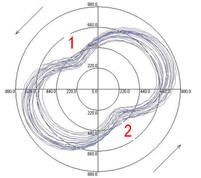 Here
we see the profile of a professional rider. The circles
themselves are "wider", showing more force (torque) being applied
to the pedals throughout their revolution.
Here
we see the profile of a professional rider. The circles
themselves are "wider", showing more force (torque) being applied
to the pedals throughout their revolution.
The "dips" top and bottom are much less defined than that of the profile above.
There is less "drop off" in the applied force as the pedals go through the top and bottom of their stroke.
The pedalling action, and applied pressure, is more constant and consistent throughout the revolution
This rider would be top right hand corner of the top right hand box.
The efficiency of the pedal stroke is measured by the shape of the profile. The effectiveness of the stroke is measured by the volume contained within the pedal circles' lines.
This winter, when you're pedalling with your mates, don't switch off and go to automatic pilot, concentrate on your pedalling, and always think "pedal circles". Big circles! Or, you could go fixie!
Think Efficiency
Moving anything other than your legs is wasting energy and
drawing oxygen from where it's needed. All your movement should
be from the
hips downwards. Nothing should move up top; you should pedal like a swan swims, gracefully.
And when you get it right, you might, just might, be able to do this...
Sep Vanmarke ~ Team
Lotto Jumbo
TT Training 2015 World Champs
Now watch it again, and this time look at the wheels. Notice how straight the bike tracks. While we're at it, stick that on your list of things to pay attention to as well.
The Message
The message in this factsheet isn't complicated. For this coming
winter, or indeed any time you are riding your bike. think
efficiency, effectiveness and economy
You need to move from the bottom left corner of the matrix to the top right. How you do that is up to you, or if you have one, your coach.
The objective is to not only increase your overall efficiency and effectiveness, it is to move the two differing concepts closer together to increase your overall economy.
There is no point increasing efficiency and doing this...
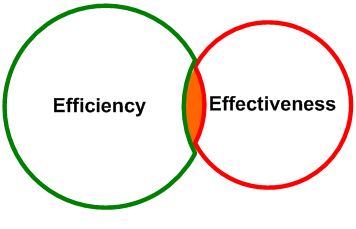
or increasing effectiveness and doing this...
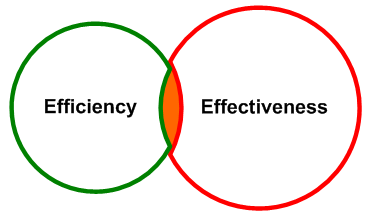
This is what you are after, you want to move from a winter of this...
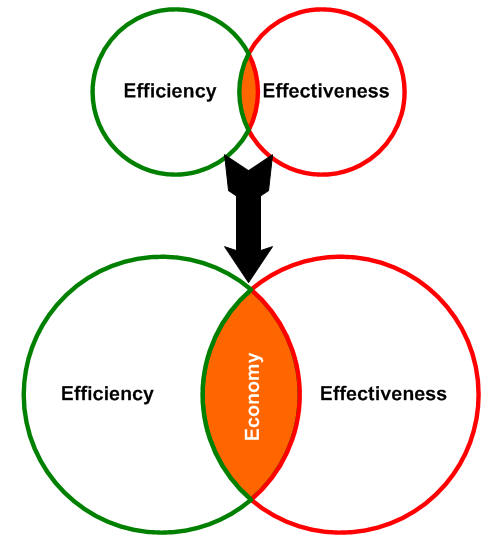
to a summer like this.
Because the gold bit in the middle is where the medals are won.
Keep these thoughts in the back of your mind, always. If what you are doing this winter isn't contributing to the model above, stop doing it!
The message is simple, change your winter training mindset and you change your summer season results.
To finish off, here's the "completed" fitness matrix. You know what you have to do...
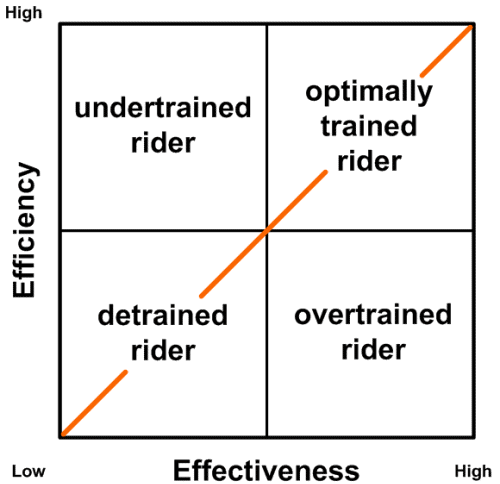
Until next time, ride efficiently and keep safe...
Stop Press...
The day I finished this factsheet, and a week after wining the road
race, Jason went on to win the Jersey 5 Mile TT Island Championship.
Beating his peers, on a road bike with clip-on aero bars. I'll
let you think about that for a while...

